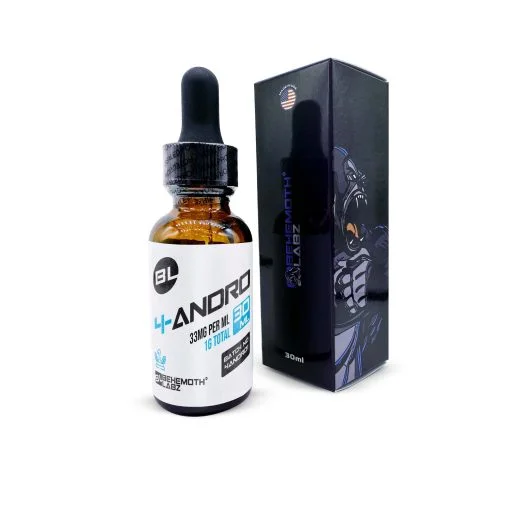SARMs
How Long Does RAD 140 Stay in the System of Research Models?
RAD 140 is a popular SARM, also known as Testolone. Its popularity has sparked interest in understanding the duration of detection of RAD 140 in non-human research models’ systems during preclinical trials. According to available preclinical data, the duration of RAD 140 in the system is 10 to 14 days. However, this duration may vary if certain factors are present during clinical trials.
Let’s look deeply into the duration of RAD 140 in the system and the factors that may influence its duration!
How Long Does RAD 140 Stay in the System of Laboratory Models?
In preclinical trials using non-human research models, it has been observed that RAD 140 may remain in the system for an average period of 10 to 14 days. This means its activity in the system may be detected for up to two weeks. After two weeks, its activity and detection may gradually diminish.
However, this duration may vary from subject to subject and is dependent on various factors that influence it. The upcoming paragraphs will profoundly discuss all the factors that may affect the duration of RAD 140 in the system. Let’s have a look at it!
Factors Influencing the Elimination Timeline of RAD 140
Several factors may influence the duration of RAD 140 in the system during clinical trials. Here are the most prominent factors:
Dosage Amount:
The dosage amount is the foremost thing that may impact the duration of RAD 140 in the system during clinical trials. A higher dosage is likely to remain effective for a longer period in research models. On the other hand, low dosage may likely be washed out earlier than the average duration from the system during laboratory trials.
Cycle Length:
Cycle length may also impact the duration of RAD 140 in the system. For instance, a longer cycle length is likely to hold RAD 140 in the system. In the case of a smaller cycle length, the dosage is expected to be removed from the system within the average period.
Metabolic Rate:
The metabolic rate has a significant impact on the duration of RAD 140 in the system. A research model with a higher metabolic rate is likely to metabolize the dosage quickly than a model with a slower metabolic rate. In short, a slower metabolic rate is expected to prolong the duration of RAD 140 in the system.
Health Status:
Health status may also impact the duration of RAD 140 in the system during laboratory trials. For instance, a research model in a healthy condition is likely to have a higher metabolic rate, leading to faster removal of RAD 140 dosage from the system during clinical trials, and vice versa for an unhealthy research model.
Genetic Factor:
Every research model has a different genetic makeup and enzymatic activities. If their genetic makeup and enzymatic activities favor a higher metabolic rate, then the duration of RAD 140 in the system is likely to be shortened during laboratory trials.
How to Detect RAD 140 Presence in the System of Research Models
Many methods and techniques are used to detect the duration of RAD 140 in the system. Here are the most commonly followed methods:
Urine Test:
Urine test is the commonly used method in scientific and research communities to detect the duration of RAD 140 in the system. In this method, urine samples from the research model are tested in the laboratory to identify the presence of RAD 140 in the system. The urine sample must be taken within two weeks.
Blood Test:
Blood test is another method commonly used to detect the duration of RAD 140 in the system. In this method, blood samples are taken from research models and then tested in the laboratory for detection. It must be noted that the samples should not be older than 14 days from the time of dosage.
Hair Follicle:
The hair follicle method is another approach used to detect RAD 140 in the system during research trials. In this test, hair samples of the research models are taken to the laboratory and then tested for the detection of RAD 140.
Tips to Clear RAD 140 From the System Faster
Here are a few tips to clear RAD 140 presence from the system during clinical trials:
Optimized Hydration Protocols:
Maintaining hydration in non-human research models through regular water intake may aid in eliminating test compounds, including RAD-140, from the system more quickly.
Rest Cycles:
Standardizing rest cycles during laboratory studies may support natural detoxification of foreign agents or test compounds, including RAD 140, from the system.
Nutritional Support in Laboratory Diet:
Diets that support hepatic function are likely to naturally detoxify or eliminate the investigational compounds from the system more quickly than the required duration.
Final Thought
The detection duration of RAD 140 in the system is 10 to 14 days. This duration may vary due to multiple factors. These factors are metabolic rate, dosage amount, cycle length, and the health status of research models used in the laboratory trials. For detecting RAD 140 samples, urine tests, blood tests, and hair follicle samples from research models are tested in the laboratory.
Frequently Asked Questions (FAQs)
How long is RAD 140 detectable in the blood of research models?
RAD 140 is detectable in the blood of research models for 14 days. After 14 days, detection becomes more challenging in the research model system.
How long does it take for SARMs to leave the system of experimental models?
The duration that SARMs take to leave the system varies from compound to compound. For instance, RAD 140 takes 10 to 14 days to leave the system. Some other SARMs take hours to weeks to leave the research models’ systems.
Is RAD 140 toxic to the hepatic function of animal models?
Research studies on animals have found that RAD 140 may cause mild hepatic damage. However, such damage is not severe and may be easily managed by following protocols and precautionary measures.
Does RAD 140 show up on a drug test in research models?
Yes, RAD 140 may show up on a drug test if the drug test is based on blood or urine samples.
Is there a way to detect RAD 140 after 14 days?
Yes, researchers and scientists use hair follicles to detect RAD 140 after 14 days in the research models.
References:
- Yu, Ziyang, et al. “Selective androgen receptor modulator RAD140 inhibits the growth of androgen/estrogen receptor–positive breast cancer models with a distinct mechanism of action.” Clinical Cancer Research 23.24 (2017): 7608-7620.
- Jayaraman, Anusha, et al. “Selective androgen receptor modulator RAD140 is neuroprotective in cultured neurons and kainate-lesioned male rats.” Endocrinology 155.4 (2014): 1398-1406.










